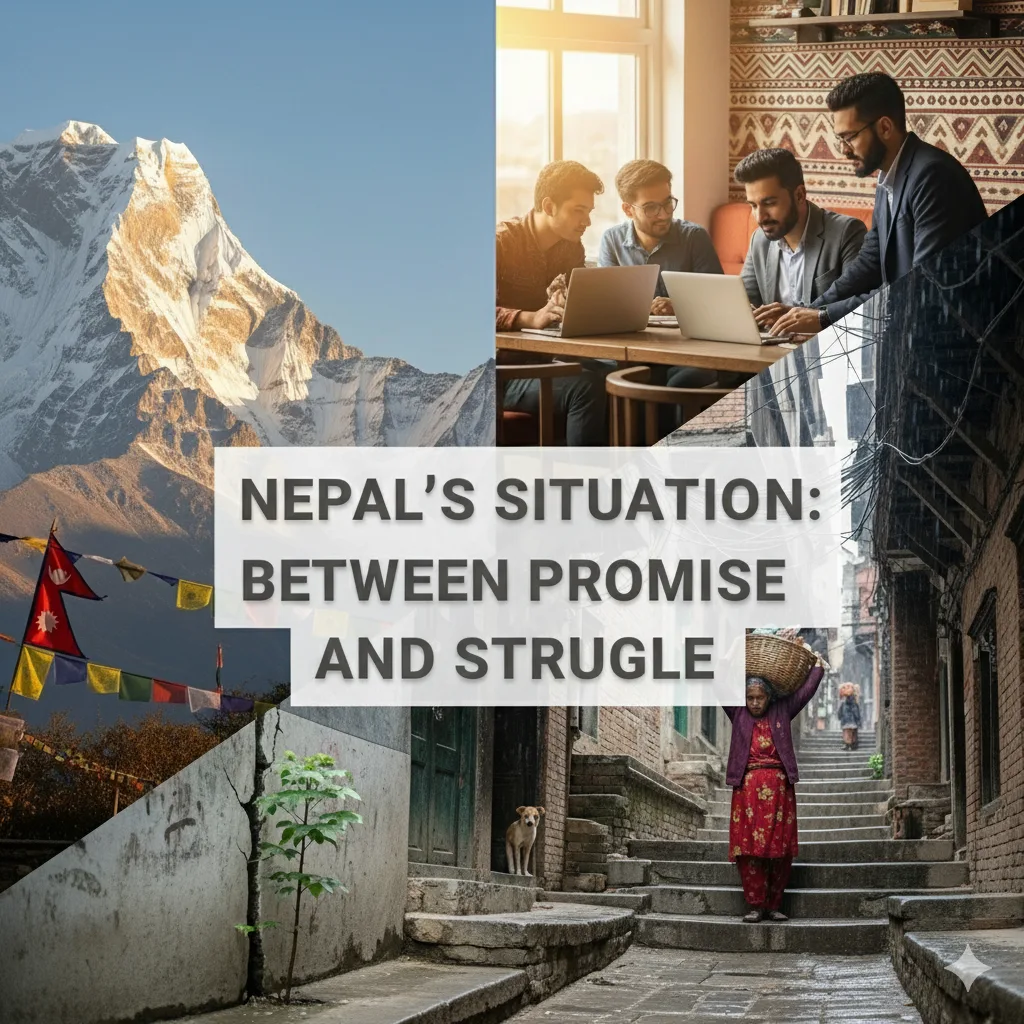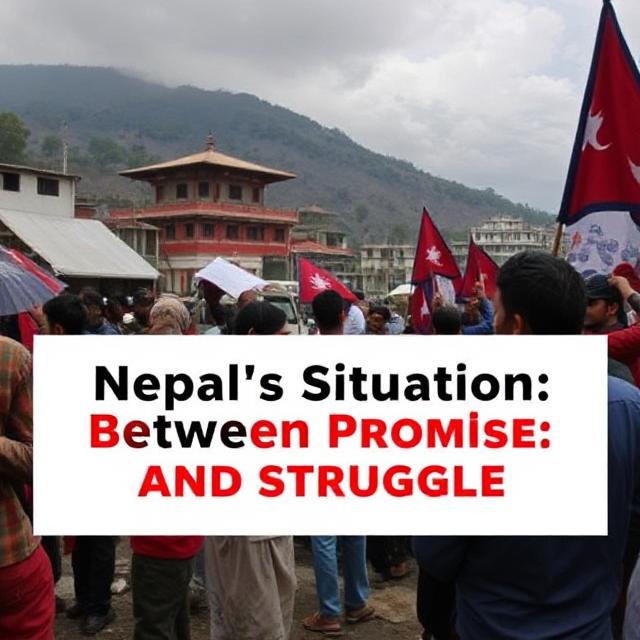When people think about Nepal, they often picture snowy Himalayan peaks, Buddhist prayer flags swaying in the wind, or adventurous treks leading up to Everest. That image isn’t wrong, but it’s only a slice of the bigger story. The everyday picture of Nepal is far more complex, full of challenges, but also layered with resilience and quiet determination.
Let’s talk about where Nepal is right now, socially, politically, and economically. Not with jargon and over-packed statistics, but in a way that actually makes sense to someone trying to piece together the reality of this small but deeply significant country in South Asia.
The Political Landscape
Nepal is kind of a paradox when it comes to politics. On paper, the country took a bold step by becoming a federal democratic republic in 2008, putting an end to the monarchy and decades of civil conflict. You’d think democracy would smooth things out, but the truth is: the road since then has been bumpy.
The constitution, which came in 2015, was a big deal—yet it wasn’t embraced by everyone. Marginalized groups, like the Madhesi and Tharu communities, felt sidelined, arguing that their voices weren’t being represented in state structures. That tension lingers today, just under the surface. Political instability also seems to be the rule rather than the exception. Prime ministers don’t last long in power, parties form and fall apart, and coalition bargaining drags on while ordinary citizens watch from the sidelines, frustrated.
There’s also the India–China balancing act. Being sandwiched between two giants, Nepal often becomes a chessboard for influence. One moment closer to India, the next tilting toward China’s Belt and Road projects—this dance affects everything from investment to infrastructure. Many Nepalis feel caught in the middle, wondering if their leaders prioritize sovereignty or are just pulled by stronger powers.

Economy: Between Migration and Remittance
Nepal’s economy is strange in its fragility and resilience. A huge slice of the workforce—millions, really—leave for jobs abroad, especially in the Gulf, Malaysia, and increasingly South Korea. The money they send home, called remittances, has practically become Nepal’s lifeline. It accounts for almost a quarter of the country’s GDP. Without it, things would collapse.
But remittances come at a cost: broken families, risky labor conditions abroad, and a workforce drain back home. Nepal is losing young, energetic people who could otherwise push domestic industries forward. Agriculture still employs the majority, but productivity is low. Urban middle classes are growing, tourism keeps showing promise, but these industries aren’t enough to anchor a strong economy. And when unexpected shocks—like earthquakes, blockades, or the COVID-19 pandemic—hit, the lack of a stronger base is painfully obvious.
Inflation and unemployment remain high, especially for youth. Many graduates end up frustrated because their education doesn’t translate into real jobs. It creates a cycle where leaving the country feels like the only option to move forward.
Social Issues and Everyday Realities
Nepal is culturally rich in ways few countries can match. Over a hundred ethnic groups, dozens of languages, Hindu temples next to Buddhist stupas, and rituals that stretch back centuries—it’s a country built on coexistence. And yet, inequality still shapes how opportunity is distributed.
Caste-based discrimination is officially illegal, but it hasn’t disappeared in practice. Gender inequality persists too; women have gained rights legally, but in rural areas, traditions still weigh heavily. There’s progress—you see more women in leadership positions than before and young people openly challenging old norms—but change is uneven.
Healthcare and education are similar stories. In Kathmandu or Pokhara, private hospitals and international schools are accessible if you can afford them. In remote mountain villages, though, one health post might serve thousands, and schools struggle with resources and trained teachers. This rural-urban gap is one of Nepal’s most defining problems.
The Environmental Question
Living in Nepal comes with both the gift and burden of geography. You have natural beauty that pulls travelers from the world over, but you also sit in one of the most environmentally fragile regions.
Climate change is not an abstract phrase here. Glaciers in the Himalayas are shrinking faster than expected, creating risks of floods and landslides. Rural farmers notice unpredictable rains, longer droughts, and shifts in growing seasons. Many people who once depended fully on farming are now unsure if agriculture alone can sustain them.
And then there are earthquakes. The 2015 quake is still fresh in the country’s memory. Thousands lost lives, whole villages crumbled, and even now some reconstruction feels incomplete. That disaster exposed how unprepared Nepal is for natural shocks, especially in terms of infrastructure.
Tourism: A Two-Edged Sword
Tourism is one of Nepal’s proudest strengths but also a fragile one. Trekking in the Annapurna or Everest region, visiting Lumbini (the birthplace of the Buddha), or exploring medieval towns like Bhaktapur—these are experiences people travel across continents for. But tourism dips in times of instability.
After the 2015 earthquake, arrivals plunged. The pandemic did the same thing, leaving local guides, hotels, and trekking shops in survival mode. In 2023 and 2024, things started recovering, but the conversations about sustainability are becoming louder. Local communities want tourism that benefits them fairly, not just big investors. And with mountains facing climate stress, the future of trekking itself might change in ways nobody anticipated.
Migration and Identity
One thing often overlooked is how migration is reshaping Nepal’s identity. When millions of youth spend years or decades abroad, it brings back not just money but also cultural shifts. Families are becoming more global in mindset. You’ll find villages in the hills dotted with concrete homes built by Gulf earnings, young people wearing Korean styles, and whole neighborhoods surviving on Western remittance streams.
But migration also creates a sense of absence. Children grow up with one or both parents working abroad. Communities feel hollowed out. And it changes politics too—young, educated voices that might demand accountability often aren’t there to push leaders harder.
Hope and Frustration Coexisting
Despite everything, Nepal isn’t defined just by struggle. It’s important to acknowledge the small victories. Road networks are expanding slowly into remote areas. Hydropower projects, if managed wisely, could make Nepal a net exporter of energy. Youth-led startups in Kathmandu are experimenting with technology and creative industries. Civil society remains vibrant, often stepping in where the state lags.
But frustration also feels thick in the air. There’s this widespread sense that corruption eats away at trust, that leaders recycle the same promises, and that progress happens slower than it should. Many people describe it as a country where potential is always discussed but never fully realized.
Looking Ahead
So where does Nepal stand? Somewhere in between hope and uncertainty. It’s a young country in terms of demographics and political system. The struggles are real—unstable governance, fragile economy, inequality, climate risk—but the resilience of its people is equally real.
If you talk to Nepalis, many will tell you: “We’ve been through worse, and we’ll keep moving.” There’s bitterness about politics, yes, but also a deep pride in culture, identity, and landscape. You see it during festivals, sports matches, or even local community gatherings—moments of togetherness that remind you Nepal is more than its problems.
The world often notices Nepal only for Everest or disasters, but there’s so much more happening, quietly and steadily. It’s the kind of place where resilience is woven into daily life, and maybe that’s why, despite its struggles, Nepal never feels like it’s standing still.

